#Ogle Design
Text

Reliant Motor Company 1970 Bond Bug
Designer: Tom Karen/Ogle Design
291 notes
·
View notes
Text




Tom Karen OBE, March 1926 - January 2, 2023. The British designer who was head of Ogle Design 1962-1999 has died. Karen's work included the Bond Bug, Reliant Scimitar GTE and the Chopper bicycle. He famously had strong opinions about fastbacks, he claimed to be "baffled" by "the case for fastbacks" because he thought there was "nothing good to be said for them except that some people think they look alright". "Aerodynamically they're lousy, headroom in the back is lousy, for visibility they're lousy, with a lot of glass they're lousy, from a weight point of view, and they give no boot access".
#Tom Karen#Bond Bug#Reliant Scimitar#Reliant Scimitar GTE#RIP#Chooper#designer#fastbacks#Ogle Design#1970s#1970s style
199 notes
·
View notes
Text
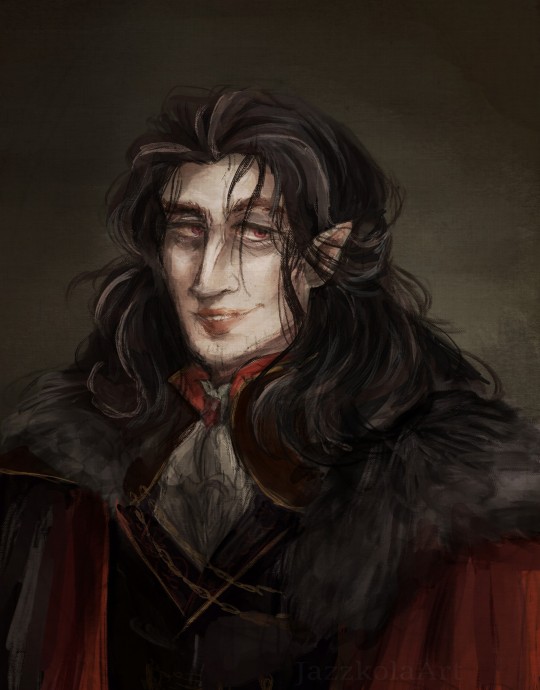
Very sketchy attempt at my version of Strahd
#dnd#dungeons and dragons#curse of strahd#strahd von zarovich#dnd strahd#character design#dnd 5e#is this my way of coping with this whole ogl situation?#yes it absolutely is
106 notes
·
View notes
Text


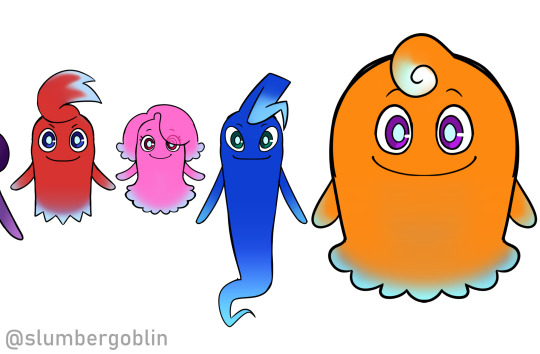
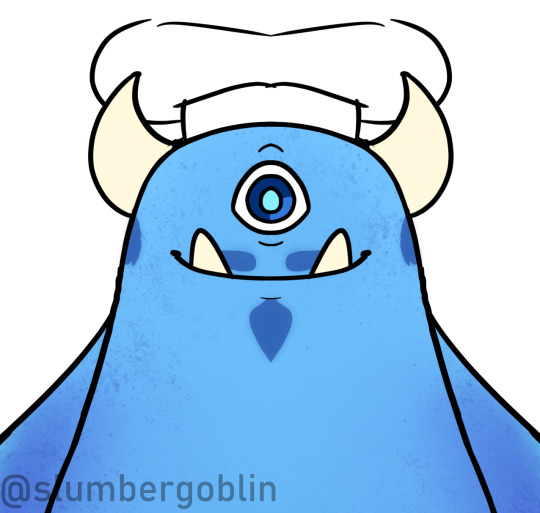
Ghost Gang (+ Sue, Ogle, and that one Evil Lady™)
#pmatga#my art#blinky#inky#pinky#clyde#ogle#sue#character design#I really need to make ogle thicker/just. more round#i also gave him a hair pattern on the sides of his head#teehee
26 notes
·
View notes
Text
the problem with male writers in general is that they are completely unable to balance the parasitic drain of male characters in fictional het relationships like even if they theoretically Dont Hate Women and are capable of having a balanced and worthwhile artistic depiction of a woman they literally cannot help but flatten any female character into a sheet of paper if she is even remotely in the sphere of romance of a male character they like
#like even though the writers and designers of ff7r obviously dont fucking like cloti and only want cloud to bottom for sephiroth forever#the mere fact that theyre baiting it and using him to project onto to ogle her means she has to be this fucking water soup character#vs them totally severing aerith from the cloud being in love with her thing as a plot necessity suddenly awkening her#and turning her into this crazy ass character#and then you have to watch both sides of the cognitive dissonance fucking do scans with each other
8 notes
·
View notes
Text
OGL Bullshit
I'd been avoiding it because the last few weeks have been brutal, but have a few non-lawyerly notes on why I don't trust the new "playtest" OGL 1.2 bullshit and think others should hesitate as well.
I'd experimented with putting out 5e stuff this year, but I've already pulled it from DTRPG and will be pulling it from Itch on Feb. 1. I'm not going back to D&D 5e as a publisher, DM, or player, and will not be publishing anything under a Hasbro or WotC-controlled license going forward. I still plan to pull everything published under OGL 1.0a by the end of year to avoid yet more Hasbro shenanigans.

Hasbro's still engaged in a blatant attempt to squash non-WotC OGL game creators, even though they've benefited substantially from that market and recruited most of the full-time D&D team from. Mike Mearls created the OGL-based game Iron Heroes at Malhavoc. Jeremy Crawford co-created the original Blue Rose (the basis for True20) at Green Ronin. Greg Tito has a co-author credit on ACKS. F. Wesley Schneider worked on Pathfinder at Paizo.
While actual attorneys have done a good job on why the CC-BY material they're currently planning to release is bullshit, much of it isn't even original to WotC, who didn't create many of the more distinctive mechanics. For instance, the system now called advantage/disadvantage was a popular mechanic in d20-based fantasy games well before 5e, and appeared in Barbarians of Lemuria under those names way back in 2008.
"Hateful conduct" is a smokescreen. Hasbro execs and their chosen attorneys will be the ones determining what constitutes "hateful conduct" (according to the draft agreement, if I accept the agreement, I waive my right to legally challenge their decisions). If you think those execs and attorneys are going to care or enforce fairly without relentless, aggressive, and widespread pressure, I've got a collection of bridges to sell you.
I won't trust a megacorp with phrases like "obscene" or "illegal": we're living in a decade when drag performance and "flamboyant femininity" could get criminalized in some places and excellent anthologies like Honey & Hot Wax deemed obscene. "You should trust us," is what Hasbro will say. I can't and shouldn't. Even if I like, know, and support current WotC D&D Team, they're not the ones who are going to be making these decisions (they might not even be on WotC's D&D team when Hasbro's decide to threaten to enforce it). Remember how much both Hasbro and WotC have changed as an org since 1.0a went into effect in 2000. I may have met and liked WotC staffers, but they may not be there in 3 years (or even 1 year) and they're unlikely to have any real control over license enforcement even now.
Again, this is "why I'm ditching 5e and will be ditching all OGL 1 material." It's not legal advice, just how I'm making decisions.
60 notes
·
View notes
Text
Abducted - solo/co-op story telling TTRPG
👽🛸
Since the start of the year, I’ve been developing a simple story telling TTRPG about a human being abruptly abducted by extraterrestials.
The game mechanism revolves around drawing cards from a standard deck of playing cards and resorting to tables with prompts depending on what you pulled.
Play throughs could have you facing off against hostile or inquisitive extraterrestials, discovering flora or fauna that’s stored on their ship, and even coming across weapons or alien artifacts on board.
Whether you wish to cooperate with the aliens or plot an escape is completely up to you.
I’ve included rules for co-op play that encourages 1 player acting as the human, and 1 player acting as the extraterrestials.
I’ve commissioned a pixel artist to render the game cover, and I couldn’t be more please with their results 👾
(WIP pics below)

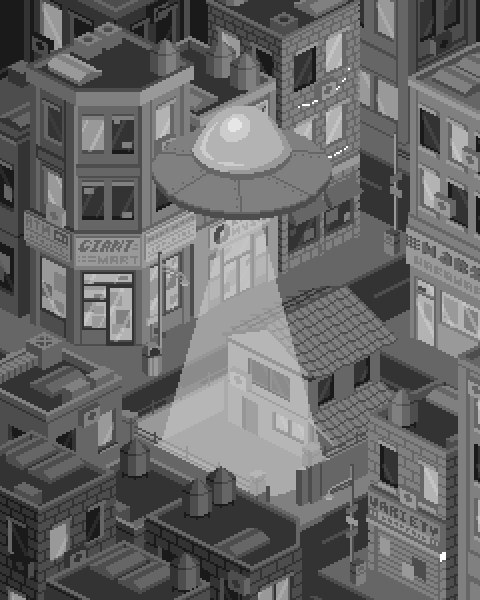
I can’t wait to share with you all the final product :)
I’m planning to upload it to itch.io for free, so stay tuned!
#solo ttrpg#solo rpg#abducted#alien abduction#rpg#role playing games#gaming#games#game design#franco games#pixel art#indie game#indie ttrpg#scifi#indiegamedev#indie#opendnd#ogl#orc license#dndbegone
43 notes
·
View notes
Text
i'm in a weirdly nostalgic mood so i've been watching the lady and the tramp movies and i honestly love this character design from scamp's adventure
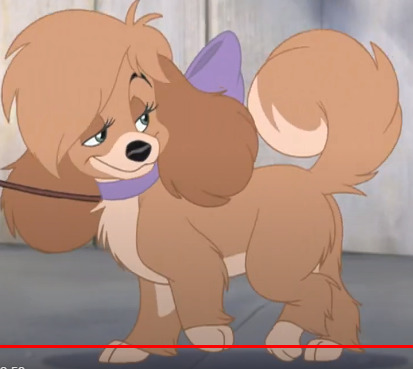
she's deadass adorable and i wish she could've had an active role 💔
#dawn speaks#lady and the tramp#lady and the tramp 2#scamp's adventure#just there to be “pretty chick that the male protag ogles at for a fleeting moment”#fuck it. i'm calling her nutmeg.#i just love her design ;u; she's so cute!
11 notes
·
View notes
Text

63 notes
·
View notes
Note
Thank you for the explanation! ❤️ now I’m intrigued, though: Where can I find information on why 4E was published under a more restrictive license?
(With reference to this post here.)
Before we can talk about that, it's necessary to understand what an incredible shitshow 4E's commercial launch was in general. I go over that in some depth here.
Understanding the sequence of events outlined there is important because it dispels one of the most widely accepted wrong answers to your question: that Hasbro and WotC cooked up the 4E Game System License (GSL) because they didn't want a repeat of Pathfinder.
In truth, the 4E GSL is what caused Pathfinder; Paizo was one of a handful of third-party publishers who'd taken advantage of the D&D System Trademark License (STL) to produce officially branded D&D products, and they'd likely have been perfectly happy to continue doing so if WotC hadn't come to them and said "hey, if you want to remain STL-compliant, you need to throw away all of your 3E material and re-develop it for 4E, under a more restrictive license, with zero notice – that's cool, right?"
(It was not, in fact, cool.)
As for why the 4E GSL really happened, there are a variety of opinions on that – a lot of it ultimately comes down to internal office politics, so there may never be a clear answer. As far as I've been able to gather, however, the problem is that the OGL had always served two masters. By all accounts, several of the OGL's principal architects genuinely believed in establishing a creative commons for D&D – but that's not how they sold the idea to the suits at the head office.
Internally, the pitch in favour of the OGL was that it would allow WotC to delegate the creation of D&D supplements and adventures to third parties, allowing WotC itself to focus on core book sales. (i.e., the PHB/DMG/MM trio and the main setting hardbacks.) Core books were always the more lucrative side of the coin, with supplements and adventures serving less as a profit-making enterprise in themselves, and more as long-tail support to drive further core book sales. The prospect of being able to get that long-tail support for free was very tempting, and is likely the main reason that corporate agreed to publish the Third Edition under the OGL in the first place.
The OGL accomplished that, to a degree, but it also resulted in a lot of publishers lifting D&D's rules text wholesale – remember, the OGL allows verbatim copying-and-pasting of rules text, which was its main draw from the perspective of third-party publishers – and stuffing it into their own standalone games. This sort of thing was fairly small-time prior to the Pathfinder debacle, but there was enough of it going on for WotC's new owner, Hasbro, to see it as a thorn in their side.
TL;DR version: in all likelihood, 4E's GSL was an effort by Hasbro to rein in the OGL and return it to the purpose for which it had initially been sold to WotC corporate: an instrument for outsourcing D&D's long-tail support to unpaid third parties while reaping the benefits of that support in core book sales.
(Of course, as outlined in the linked post, what was actually accomplished was to shrink D&D's third-party support practically to nothing while simultaneously creating its own largest competitor; it's a fair question how much of this was due to the GSL itself, and how much of it was due to all the other corporate incompetence and general fuckery attendant to 4E's rollout, but either way, the result was WotC and Hasbro pulling the plug on 4E early, and reverting to the OGL for 5E. It was a learning experience all around – though the present business with the OGL 1.1 leads one to suspect that they didn't learn the right lessons!)
#gaming#tabletop roleplaying#tabletop rpgs#dungeons & dragons#d&d#hasbro#wizards of the coast#ogl#ogl 1.1#game design#publishing#swearing
462 notes
·
View notes
Text
Beware the Gifts of Dragons: How D&D’s Open Gaming License May Have Become a Trap for Creators

by Kit Walsh
According to leaks reported last week, the company that owns Dungeons and Dragons (D&D) is planning to revoke the open license that has, since the year 2000, applied to a wide range of unofficial, commercial products that build on the mechanics of Dungeons and Dragons. The report indicates that this wouldn’t simply be a change going forward, but would affect existing works that relied on the license. The old license would be revoked for existing uses, and people who have used on it will be forced to adopt new terms or renegotiate with the company, Wizards of the Coast, a subsidiary of game giant Hasbro.
Obviously, this would be a rude and unfair thing to do to people who have accepted the invitation of the open gaming license (OGL) to create new games and stories that build upon Dungeons and Dragons. But would it be legal?
Even more interesting, would revoking the OGL actually give some third parties more freedom to operate, given that the OGL forced them to promise not to do some things that copyright and trademark law otherwise permit?
Let’s find out.
READ MORE
#dungeons and drawings#wotc#OGL#hasbro#authors#writers#game designers#copyright law#creative commons#fandom
26 notes
·
View notes
Text
Seeing someone we follow clown on analog horror is always so fucking weird. like motherfucker no horror media is scary why is it only joke worthy when its a freaky face on some old ass boobtube instead of in front of a handheld camera or some actor. its all fake as shit none of it can hurt you. jumpscares are as non scary as analog horror cliches as existential horror as slashers as zombie flicks as etc etc.
#horror#horror media#analog horror#ive talked about this in the tags of some random ass post but now im putting it here cause i cant sleep and want to fight someone#none of us in this system feels any real fear from horror media. none of them.#not video games not movies not tv shows not books not nothing.#its all not scary we just ogle the cool designs#so its always so fucking weird seeing people shit talk some horror genre or whatever cause like#what the fuck are you/are you not experiencing from this shit? fucking tell us you weird fucks whats in this?#-salem
2 notes
·
View notes
Text
I'd like to announce my last-ever written DnD project, Austrangia, which is available here. There's a bit of a story behind this so buckle up.
I first started working on Austrangia in April 2022. I wanted to make something that was distinctly Australian folk horror. Eventually, the project expanded to include a couple of different horror projects. Due to my general desire to move away from DnD and focus on my own projects, I ended up putting it on the backburner.
Then the new OGL was leaked.
Suddenly I had a 15000 word project that I either needed to quickly finish and find art for, redo entirely or scrap. I was determined to retain control of the project, but things seemed hopeless. Then something amazing happened.
In the spirit of "F*ck the new OGL", several of my friends offered to help me finish the project. Some wrote sections I was struggling with, some provided tech/moral support and one particularly amazing friend is providing illustrations.Without their kindness and hard work on this project, I don't know what I'd do. While Austrangia is releasing today, because I'm honestly a little paranoid about WoTC, it is by no means a static project.
Because all of the illustrations aren't quite done yet and I don't want my friend's work and dedication to this project to go to waste, if the new OGL turns out to be backwards-compatible I'll rework Austrangia to be system-agnostic.
Keeping control of the project that was made because I have amazing friends is important to me, as is supporting said friends. If you want to support the people who allowed me to do so, the illustrator has a blog @artofcjb and you should go follow them.
12 notes
·
View notes
Text
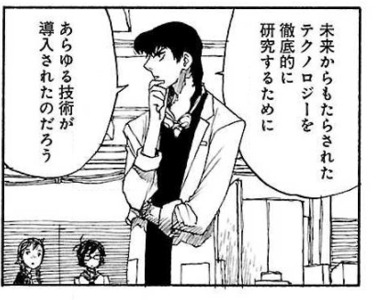

"I bet he reeks good"
#these panels of hoshie ogling tenma are so funny to me#she had such a cute pre timeskip design its sad they barely used it
4 notes
·
View notes
Text

I’ve been in the mood for some classic dnd adventures, so why not a crossover with the iconic Star Sans trio? They’d make a great dnd party!
Ink Sans belongs to Comyet
Dream Sans belongs to Joku
Swap Sans belongs to Popcorn Prince
#not great timing cuz of the new OGL but whatever#love Inks jacket + blouse combo but dang this boi complicated#also gave him a hat because he didn’t look ‘fantasy’ enough#think I translated their designs to the genre nicely tho#undertale au#ink sans#dream sans#swap sans
11 notes
·
View notes
Text
D&D, Sunless Sea, and the Search for Exploration in Games
Okay. So, as a consequence of all the D&D OGL 1.1 things I’ve been reading and watching lately (I’m not going to touch it, but I’ve been following), I came across this video of The Real John Wick gleefully (but not meanly) recommending some other games and systems for people to explore:
youtube
And lots sounded interesting, so I had a browse around his channel seeing if he talked about any of them more. And he does. He has a series where he makes a character a day for different games for a month, and while doing so he also has some interesting things to say about the various systems. In particular, about game design, and the themes of games, and how (and how successfully) they express those themes through their mechanics, such as this video where he talks about the humanity mechanic in VtM and how it’s actually in many ways the central mechanic of the game, because the theme of VtM is how well a person could remain human when they’re forced suddenly to exist in a world designed by and for predators, (but then how that wasn’t necessarily the theme the actual player-base wanted to engage with, and so the game shifted in focus a bit).
And this made me think about a particular theme I’ve been looking for in games, mostly video games but also ttrpgs, and why I rarely feel like I’ve found it, and one place I kind of did.
One thing I have always looked for in games is a sense of exploration. Not as a side-note, but as the main focus of the experience. It’s a problem in video games and many of the tabletop games I’ve experienced, because the focus for so many of them has been combat, not exploration.
(Now, I will be the first to admit, this could well be because my experience of games of any kind has been somewhat limited).
And when I say exploration, I do mean something sort of specific. I don’t just mean wandering around finding and admiring the landscape, although that is fun for a while. This is something that you do feel in Minecraft, that exploring the world is fun, particularly with the new terrain generation, but past a certain point the emptiness of the world does begin to be felt, and you want to start building things and finding things, like the ancient cities, that sort of make the experience … more interactable? I don’t just want to look at things, I want to discover and interact with them.
And, for me personally, I don’t necessarily want to have to shoot and/or stab things constantly to manage it. A degree is fine, exploration doesn’t have to be easy, but I don’t want it to tip over into the combat being the point. This is a thing in certain open world video games, such as Fallout, where I do adore wandering around and discovering the map, but the constant deathclaws or legion assassins or supermutants or what have you shift the focus of the experience.
But this is hard to explain to people, and for ages I didn’t really have an example of what I was actually looking for in a game to kind of point to. Until I played Failbetter’s Sunless Sea.
(Warning: I am going to ramble about this for a bit)
Okay. So the thing in Sunless Sea is, you start with a completely blacked out map. The whole and main point of the early game is to fill in the map. I have never in a game felt anything like that first experience of Sunless Sea’s completely blank, darkness-shrouded square of emptiness. You get your dinky, fragile little starter boat, and you sail out into the abyss. The utter unknown. And you start puttering around and you start finding the islands. The lands along the edges. You start putting into foreign ports. And your map fills in. There are bright lines and discovered lands where your little boat has travelled. The experience is incomparable.

And the ports aren’t empty. They’re not just dots on a map. You dock with them. You interact with them. You complete their stories. Many of them have refreshable events where you can (through the text and description medium) continue to explore the interiors of the islands and lands the port represents. You risk things. You find things. Your presence changes things.
And then. Then. The most incredible thing of all. You die. There is combat in Sunless Sea, and your boat is bloody fragile, and it’s incredibly easy to die. So you die. And you start again on a new captain. And not only is the map black again, but the islands have changed location. They’re not in the same place. Because Sunless Sea is set in the ‘Neath, where the laws of reality are literally and in-universe kept away by the darkness, and the sea physically changes once you stop continuously observing it.
I don’t know how to describe to you the incredibleness of this experience for me. The idea of this. The mythology of the ‘Neath is something that I utterly adore, and so much for this reason. Once you break continuity, once it’s not the same in-game person doing the observing, reality shifts. And you have to explore everything from nearly scratch all over again.
And I know, this is one of the things that a lot of people didn’t like. To the extent that the sequel game, Sunless Skies, actually changed it. And I am going to talk about that a little bit.
In Sunless Skies, the map does not change, and you can pass your charts down from one captain to the next, so they also stay filled in. Once you discover something, in Sunless Skies, it stays discovered. And that … the reason I could pinpoint the experience of exploration in Sunless Sea as the thing I truly enjoyed and was looking for was because of this. Because they changed it for Sunless Skies.
They did try to keep the sense of exploration to a degree for Skies. Since the map didn’t change, they compensated to an extent by adding more of them. Skies has four maps, four areas to explore, to Sea’s singular one. There is a still a lot of exploration in Sunless Skies, at least the first time around. But that … that was the thing. The first time around. Only the first.
They wanted to reduce the grind of Sunless Sea, essentially, and the sense of futility a lot of people felt, having to going through essentially the entire early game all over again every single time your captain died (and your captain will die a lot). And I do get that. Skies is significantly more polished and easier to play and less grindy than Sea. But. I still felt an incredibly tangible sense of loss regardless.
And the thing of it is, the difference between the games also makes complete and perfect sense thematically in-universe. Because Skies is set in the High Wilderness, where the suns live. And the Suns, in the world of Fallen London/Sunless Sea/Sunless Skies, their light, is what provides the laws of reality. While the ‘Neath, explicitly, was beyond their rule. It lay in darkness. It literally lay beyond law, which includes physical law, the laws of time, the laws of physics, all of it. So of course it makes sense that the High Wilderness is more rigid and less inherently changeable and lawless than the ‘Neath, which is literally chaos incarnate.
It makes sense. It makes perfect sense. There’s absolutely nothing wrong with Sunless Skies, it’s an incredible game. But I realised that I preferred the ‘Neath. I preferred Sunless Sea, grind and all.
And … thematically, too. Because the other thing of it is, in the games the central power you’re usually representing is Fallen London. It’s the Victorian British Empire, in strange gothic cosmic horror land. And to a large extent, Sunless Skies represented a victory for imperial London, where Sunless Sea defiantly did not.
Because, in Sunless Sea, the map always changed. Even explored, even colonised, the map resisted control and demanded continuous exploration. The ‘Neath refused imperial control on a fundamental, mechanical level. You cannot permanently map the ‘Neath. It physically changes. Fallen London had to perpetually keep sending out explorer captains just to keep updating where their ports and colonies now are. Several parts of the map resisted in other ways, too. Irem, which changes it’s location in time as well as space. The Iron Republic, where the laws of the reality are even more broken than they are in the general ‘Neath, and your armies can turn into a flock of ravenous mushrooms on disembarking, or walk off the gangplank only to see a different version of themselves walking back on, or other assorted weirdness.
The ‘Neath would not stay mapped. It would not stay colonised. It would not stay controlled.
Whereas the High Wilderness, by contrast, did. Because your maps stayed filled. The Wilderness stayed explored. In the High Wilderness, the thing stopping the expansion of Empire was the existence and control of other Empires, the Empires of the various Suns, where reality in several places was more rigidly controlled. Even on the map where their sun was dead, Fallen London just moved in. Even in the part of the map where everything is dark and reality has broken down, there’s still a Sun, it’s just allowing reality to break down to the degree it can. But the map stays filled. The world stays discovered.
Sunless Skies is not a game of exploration, it’s a game of Empire. But Sunless Sea …
Sunless Sea is the closest thing I’ve ever experienced in a game to a raw mechanical continuous sensation of discovery. Exploration. Now, it didn’t do so perfectly. It was clunky, and grindy, and for too many players it was grindy to the point that they couldn’t enjoy the sense of exploration, because the cost of restarting and retracing steps was just too high. And it also … the ‘Neath moved, yes, but it moved according to the limits of the system. The landmasses around the edges stayed the same every time, so you always knew where at least some ports were going to be, and even the islands moved in strips, kind of like a rubiks cube, so you did kind of have a sense of what ports would be in what quadrant, even if not in what particular order. It had limits.
But the sensation of that blank, shrouded map. The knowledge that no Empire could ever permanently fill it in. The knowledge that London would never fully control it. That the map would always have blank spots. That explorers would always be necessary. That there would always be something beyond our knowledge and possibly our comprehension.
That was, if you’ll pardon me, one hell of a thing.
And that’s … that’s what I’ve been looking for, on a mechanical level, in games. That sensation of a map to be filled in, a map that will resist being filled in, a map that will both reward and resist you attempting to fill it. The knowledge that there are things to be discovered and interacted with. That there are other places and other peoples and other wonders and other horrors out there to be discovered, and that the discovery of them will have consequences, and the knowledge that you cannot control what those consequences will be.
I want a world that exists not to be fought or controlled, but to be explored. I want a game about mapmakers. I want a game where exploration is the thing primarily and mechanically and thematically rewarded.
This was the thing I was most excited for, and most disappointed by, when it came to the Spelljammer books for D&D 5e. The Astral Sea was the most incredibly promising and exciting setting I’ve heard of in ages, a space for potentially limitless exploration, but there was nothing in those books about it. They offered nothing, no hints, no starting point, no setting. They gave you nothing to explore, nothing to interact with. Just a void with nothing in it. And, yes, I’ve been realising that D&D potentially isn’t a system that rewards exploration really in general. It’s a combat focused system, for all the wonders that various settings put forward. I am actually somewhat grateful for the OGL debate for prompting people like The Real John Wick above to show off some of the rest of what’s out there, so I can explore more options and see if there’s something …
Well. Something that feels like Sunless Sea out there. That black map, waiting to be uncovered, and secretly promising never to let you fully manage it.
I’ll be sure to browse his channel and others to see what I can see. Heh.
(Also, yes, I’m absolutely accepting recommendations for this)
8 notes
·
View notes